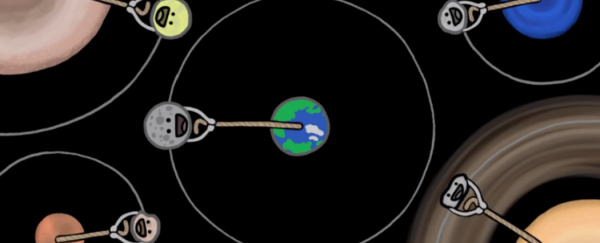The first time humans actually got a glimpse of the far side of the Moon was in 1959, when the Soviet spacecraft Luna 3 beamed back the world's first images. It was a pretty big moment, because we're so used to seeing the same side of the Moon, day in, day out. But why?
In the latest episode of MinuteEarth above, they explain that we only ever see one side of the Moon because it rotates just once on its axis, each time it orbits Earth. If the Moon didn't spin at all on its way around, we'd end up getting a full, 360 degree view of it every time it lapped us, and if it happened to be spinning twice as fast as it is now, we'd get a view of its entire surface more than once during each orbit. But that's definitely not the case.
The way that the Moon spins on its way around is one of the most fascinating things about it. As MinuteEarth explains, like the spin and orbit of most other moons in our Solar System, the Moon's movements are actually in perfect sync with Earth's. This wasn't always the case - when it was first formed, the Moon had a 10-hour orbit, and was almost certainly not in sync with Earth's movements. But over time, Earth's gravity deformed the Moon, until it took on a slightly oval shape, and from that point, everything changed.
I'll let the guys at MinuteEarth explain the actual physics of it above, so you can appreciate the mind-blowing series of events that had to somehow come together to form the perfectly precise set of conditions for making our home so incredibly liveable.
Source: MinuteEarth
